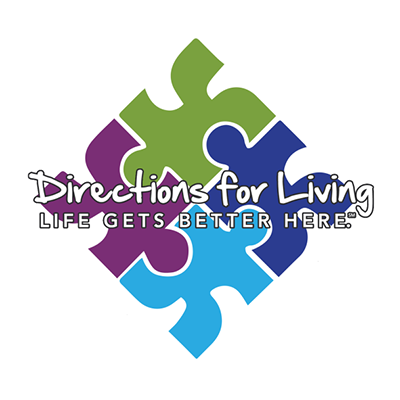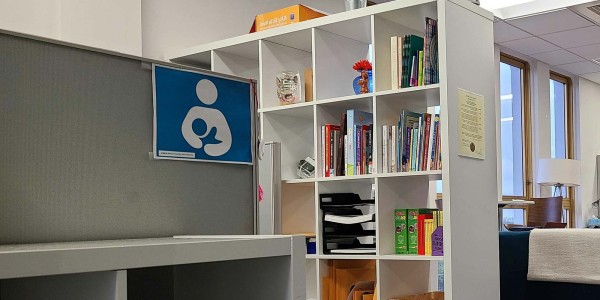On This Page
Here you'll find a range of options to offer paid leave. To learn more about each area, download the complete Guide to Family-Friendly Workplaces in Florida.
Parental Leave
Paid leave for the birth, adoption, or acceptance of foster placement of a child that is separate from vacation or sick leave.
Benefits to Employers1
- Increases or does not decrease productivity
- Improves recruitment
- Increases likelihood that new mothers will come back to work (and to same employer) and stay employed
- Increases likelihood that new fathers will stay employed
- Reduces turnover costs through increased retention
- Improves morale and job satisfaction
Benefits to Children2
- Increases birthweight
- Reduces infant mortality
- Improves health care
- Increases well-baby care
- Increases immunization rates
- Supports child development
- Increases educational attainment
- Increases IQ Increases test scores
- Reduces behavioral/mental health problems
- Improves regular school attendance
- Reduces teen pregnancy rates
- Increases wages as adults
Benefits to Parents/Families3,4
- Improves family incomes
- Increases initiation and length of breastfeeding
- Decreases maternal depression and stress
- Increases paternal engagement in caregiving
- Increases job satisfaction
- Builds healthier parent-child relationships
- Reduces wage gap between women and men
- Reduces wage gap between women and men
- Reduces wage gap between mothers and childless women
- Reduces stigma of taking leave
- Increases gender equity and women’s advancement at work
- Workers are more likely to remain in the workforce, increasing family economic security
Parents They Want More Paid Leave, Feel Pressured to Return to Work Too Soon
Offering family-friendly policies is a great first step toward becoming a family-friendly workplace. But ensuring your workplace culture allows parents to take advantage of the policies you offer is equally important.
In a 2018 survey of more than 1,100 current and prospective parents, the majority of working parents say they contend with a lack of paid leave, pressure to return to work soon after a baby is born and stress over career consequences for taking time off.5 Furthermore, in a 2020 survey of more than 900 working parents in Florida, paid leave and flexibility were rated one of the most desired workplace benefits.6
Sick Leave
Sick leave refers to paid leave for employees to care for themselves or a family member during a temporary, short-term medical issue, such as illness; or for preventative health care, such as an annual well visit or a prenatal doctor appointment.
While many companies offer “paid time off” (PTO) and/or vacation days for all employees—and those could be used for caregiving or sick time—it is important to highlight the additional leave policies that support these needs specifically. Research shows better health and well-being outcomes for children and families when parents and caregivers have access to sick leave and caregiving leave in addition to PTO. Additionally, such benefits are proven to impact morale and productivity across the workforce as a whole— not just working parents.
Benefits to Employers7
- Increases productivity
- Does not lower profits or harm employment
- Increases retention, reducing turnover costs
- Reduces employee absenteeism
- Provides healthier work environment
- Reduces health care costs
- Workers recover from temporary disability, illness or injury more quickly and are less likely to relapse or be reinjured
- Increases loyalty Reduces likelihood of dangerous injury or death on the job
Benefits to Children8,9
- Encourages use of preventative health care
- Children recover more quickly from illness and injury when parents are available to care for them
- Lowers risk for flu and other illnesses by encouraging children to stay home until they are well
Benefits to Parents/Families10,11
- Encourages use of preventative health care
- Workers recover from disability, illness, or injury more quickly
- Lowers risk for flu and other illnesses by encouraging parents to stay home until they or their children are well
- Reduces financial strain from chronic illness or injury.
Family and Medical Leave
Family and medical leave allows employees to take paid time off to care for a long-term medical issue for themselves, their children, or a loved one or to address needs during a long-term absence from work, such as a military deployment.
Benefits to Employers12
- Increases productivity Does not impact profits
- Increases retention, reducing turnover costs
- Reduces employee absenteeism
- Provides healthier work environment
- Reduces health care costs
- Workers recover from disability, illness, or injury more quickly
- Increases loyalty
Benefits to Children13
- Encourages use of preventative health care
- Children recover more quickly from illness and injury when parents are available to care for them
Benefits to Parents/Families14
- Encourages use of preventative health care
- Workers recover from disability, illness, or injury more quickly
Parental Involvement Leave
Short-term paid leave that allows a parent to take an afternoon or a day off to attend a school performance or athletic event, volunteer at a child’s school or otherwise take care of a child’s needs.
Benefits to Employers15
- Improves productivity Increases retention
- Reduces complaints of discrimination towards employees with caregiving responsibilities
- Improves workplace climate
Benefits to Children16
- Improves regular school attendance
- Improves grades and test scores
- Reduces behavioral/mental health problems
- Earlier identification of learning problems
- Improves likelihood of high school graduation
- Improves likelihood of attending college
Benefits to Parents/Families17
- Decreases stress
- Increases engagement in children’s education
Family Friendly Policies
Footnotes
- North Carolina Early Childhood Foundation. “The Research Basis for Family-Friendly Workplaces.” June 14, 2018. https://files.familyforwardnc.com/wp-content/uploads/2018/04/NCECF_FFNC-policyfactsheet-061418.pdf.
- North Carolina Early Childhood Foundation. “The Research Basis for Family-Friendly Workplaces.” June 14, 2018. https://files.familyforwardnc.com/wp-content/uploads/2018/04/NCECF_FFNC-policyfactsheet-061418.pdf.
- North Carolina Early Childhood Foundation. “The Research Basis for Family-Friendly Workplaces.” June 14, 2018. https://files.familyforwardnc.com/wp-content/uploads/2018/04/NCECF_FFNC-policyfactsheet-061418.pdf.
- Durana, Alieza, Jonathan Moyer, Brigid Schulte, and Brian Stout. “Family Paid Leave: How Much Time is Enough?” New America. June 16, 2017. https://www.newamerica.org/better-life-lab/reports/paid-family-leave-how-much-time-enough/introduction
- SimplyHired. “Planning for Paid Parental Leave.” 2018. https://blog.simplyhired.com/planning-for-parental-leave/
- “Florida’s 2020 Working Parent Survey” https://www.childrensmovementflorida.org/sites/default/files/documents/2020-working- parent-survey-findings.pdf
- North Carolina Early Childhood Foundation. “The Research Basis for Family-Friendly Workplaces.” June 14, 2018. https://files.familyforwardnc.com/wp-content/uploads/2018/04/NCECF_FFNC-policyfactsheet-061418.pdf.
- North Carolina Early Childhood Foundation. “The Research Basis for Family-Friendly Workplaces.” June 14, 2018. https://files.familyforwardnc.com/wp-content/uploads/2018/04/NCECF_FFNC-policyfactsheet-061418.pdf.
- Effects of domestic violence on children.” U.S. Department of Health and Human Services Office of Women’s Health. https://www.womenshealth.gov/relationships-and-safety/domestic-violence/effects-domestic-violence-children
- North Carolina Early Childhood Foundation. “The Research Basis for Family-Friendly Workplaces.” June 14, 2018. https://files.familyforwardnc.com/wp-content/uploads/2018/04/NCECF_FFNC-policyfactsheet-061418.pdf.
- Effects of domestic violence on children.” U.S. Department of Health and Human Services Office of Women’s Health. https://www.womenshealth.gov/relationships-and-safety/domestic-violence/effects-domestic-violence-children
- North Carolina Early Childhood Foundation. “The Research Basis for Family-Friendly Workplaces.” June 14, 2018. https://files.familyforwardnc.com/wp-content/uploads/2018/04/NCECF_FFNC-policyfactsheet-061418.pdf.
- North Carolina Early Childhood Foundation. “The Research Basis for Family-Friendly Workplaces.” June 14, 2018. https://files.familyforwardnc.com/wp-content/uploads/2018/04/NCECF_FFNC-policyfactsheet-061418.pdf.
- North Carolina Early Childhood Foundation. “The Research Basis for Family-Friendly Workplaces.” June 14, 2018. https://files.familyforwardnc.com/wp-content/uploads/2018/04/NCECF_FFNC-policyfactsheet-061418.pdf.
- North Carolina Early Childhood Foundation. “The Research Basis for Family-Friendly Workplaces.” June 14, 2018. https://files.familyforwardnc.com/wp-content/uploads/2018/04/NCECF_FFNC-policyfactsheet-061418.pdf.
- North Carolina Early Childhood Foundation. “The Research Basis for Family-Friendly Workplaces.” June 14, 2018. https://files.familyforwardnc.com/wp-content/uploads/2018/04/NCECF_FFNC-policyfactsheet-061418.pdf.
- North Carolina Early Childhood Foundation. “The Research Basis for Family-Friendly Workplaces.” June 14, 2018. https://files.familyforwardnc.com/wp-content/uploads/2018/04/NCECF_FFNC-policyfactsheet-061418.pdf.
We are grateful to our partners in North Carolina who provided much of the research base for this guide. Additional information can be found at www.familyforwardnc.com.

©2021 North Carolina Early Childhood Foundation. All Rights Reserved.






